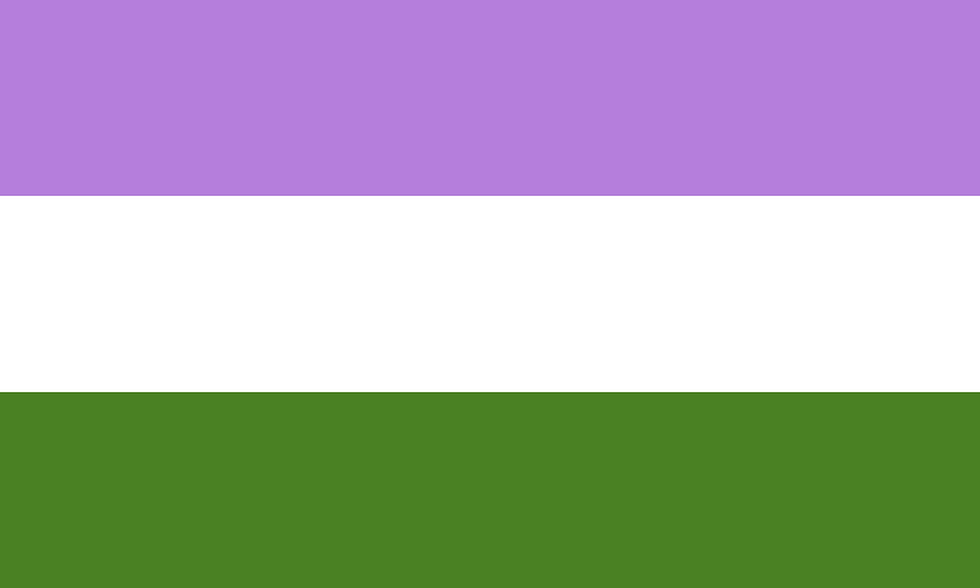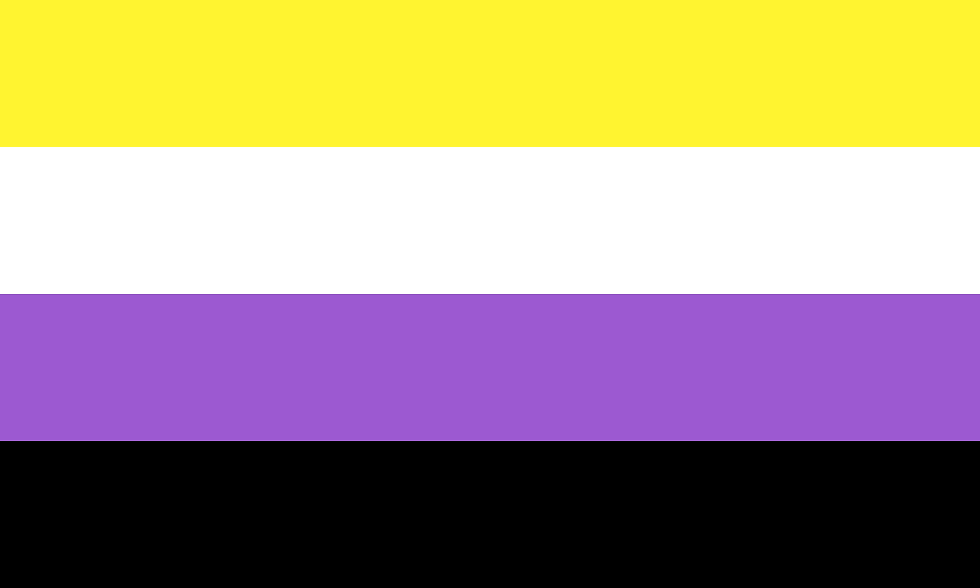Non-Binary
- PRISM Inc.

- Oct 26, 2020
- 3 min read
Updated: Jun 11, 2024
What Does Non-Binary Mean?
Non-binary is an umbrella term used to refer to a wide range of gender identities that do not fit into the binary of man or woman.
Examples of non-binary identities are genderqueer, genderfluid, agender, bigender, gender non-conforming, and more. However, it's not uncommon for someone to identify as simply "non-binary" or even as a mix of several of these identities.
Non-Binary History
Non-binary identities are not unique to the 21st century.
While some people may claim that non-binary identities were a concept created by the current generation, a record of non-binary gender has existed since the beginning of written history, as far back as Mesopotamia. At the time, Mesopotamians referred to a third gender of people who often performed religious duties. This third gender continued to be recognized in many civilizations throughout history.
We see many examples of gender non-conforming, trans, and non-binary identities in Asian culture throughout history. In our article Gender Expression in East Asian Cultures, we explore these vibrant histories.
Non-Binary Issues
Non-binary individuals face a variety of issues in today’s society. Among these difficulties are transphobia, misgendering, deadnaming, and gender dysphoria.
Gender Dysphoria
Gender dysphoria is the feeling that one’s gender identity differs from their biological sex or assigned gender. Gender dysphoria may lead a non-binary or transgender person to be uncomfortable with the characteristics of their assigned gender or biological sex, including the gender roles society associates with that sex or their physical appearance and body.
It’s important to note that you don’t need to experience gender dysphoria to be non-binary. Not all non-binary people experience gender dysphoria.
Transphobia
Transphobia is a range of negative reactions to people who do not conform to social gender norms and expectations, such as people who are non-binary. Transphobia can result in non-binary and transgender individuals experiencing a lack of acceptance and violence from those around them. As such, non-binary individuals facing transphobia may suffer from both physical and emotional harm simply because they fall outside of society’s expectations.
Misgendering and Deadnaming
Misgendering is using a former pronoun of a transgender or non-binary person. Deadnaming is using a transgender or non-binary person’s former name.
Intentionally deadnaming or misgendering is highly inappropriate and harmful. However, in some cases, deadnaming or misgendering can be accidental. If you knew a transgender person before they discovered their gender identity, you might be used to referring to them by their old pronouns and deadname. It might be a force of habit to refer to someone by their old identity. However, it is still wrong, even if it is accidental. If you accidentally refer to a transgender person by their old identity, name, or pronouns, simply apologize and correct yourself.
Non-Binary Symbols
Genderqueer Flag

The genderqueer flag, featuring lavender, white, and chartreuse stripes, was designed by Marilyn Roxie in 2011.
Lavender - Represents androgyny and queerness White - Represents people who identify as having no gender or are agender
Chartreuse - Represents identities outside of the gender binary.
Non-Binary Flag
The non-binary flag was created in 2014 by Kye Rowan.
Yellow - Represents something as its own and, therefore, those who identify outside of the gender binary
White - Represents multigender identities, as it is made of all other colors mixed together
Purple - Represents people who identify as a mix of the male and female genders
Black - Represents people who identify as agender, as black is the absence of color.

.png)


